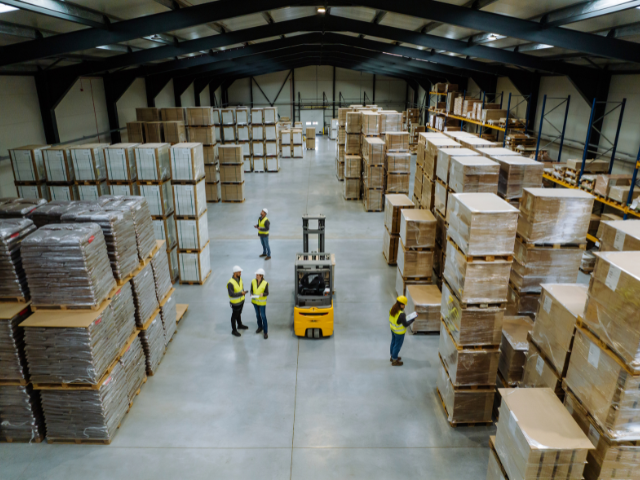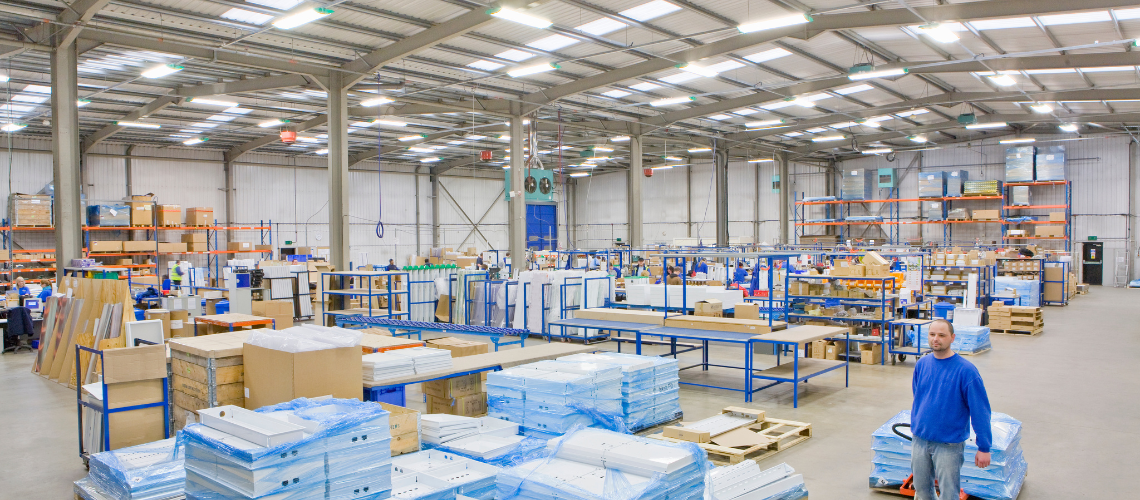Lighting remains one of the most overlooked factors affecting productivity, safety, and operational costs in warehouses. Yet, research consistently shows that poor lighting contributes to increased accidents, reduced accuracy, lower staff wellbeing, and elevated operational risk – all of which directly affect the bottom line.
For warehouse operators across the UK and EU, ensuring optimal lighting isn’t just a compliance requirement – it’s essential for creating efficient, high-performing, and future-ready facilities that support both workforce wellbeing and business goals.
The Real Risks Of Poor Warehouse Lighting
Inadequate lighting in warehouse environments is a significant contributor to safety incidents, inefficiencies, and higher operating costs. Consider the following risks:
Reduced Visibility
Leading to increased workplace accidents. According to HSE, 32% of all non-fatal injuries in UK workplaces stem from slips, trips and falls – many exacerbated by poor lighting. These incidents cost UK businesses over £510 million annually.
Increase Picking Orders
Undermining order accuracy and customer satisfaction. Enhanced lighting can reduce these errors by up to 15-20%, improving throughput and accuracy.
Slower Work Rates
As employees struggle with poor visibility in aisles, racking and loading bays. Research from the Society of Light and Lighting suggests productivity gains of up to 20% with high-quality lighting.
Higher Absenteeism
With poor lighting contributing to headaches, fatigue and discomfort – factors shown to raise sickness rates and staff turnover.
Non-Compliance with HSE Standards
Particularly required lux levels in different warehouse zones. Poor lighting can lead to enforcement action, fines or insurance complications.
Elevated Insurance Premiums or Rejected Claims
Insurers increasingly assess lighting adequacy when evaluating site safety
Beyond meeting legal obligations, well-lit warehouses improve safety, boost performance, and reduce costs – making modern, compliant lighting a critical investment.
Poor Lighting Impacts On Warehouse Safety
The logistics sector faces rising pressure to reduce workplace accidents, particularly with faster-paced fulfilment and automation demands. Where lighting is inconsistent, outdated, or insufficient, employees are more likely to:
- Miss hazards or obstacles on the floor
- Struggle to read labels, instructions, or screens
- Experience glare or shadows that distort vision in key zones
- Navigate poorly lit racking aisles or loading areas
30% of non-fatal warehouse injuries originate from slips, trips, or falls – often worsened by poor lighting.

Poor Lighing Reducing Productivity & Efficiency
Inadequate lighting isn’t just a safety concern, it’s a hidden drain on operational efficiency. Poorly lit zones slow workers down and increase errors. The Society of Light and Lighting reports:
- Improved lighting increases warehouse productivity by up to 20%
- Enhanced visibility reduces picking errors by approximately 15–20%
- Employee wellbeing improves, reducing absenteeism and boosting morale
For high-volume operations, even marginal gains in accuracy and throughput translate to major financial benefits.
2024 Electrical & Data Highlights
In 2024, the DTE Project Services team delivered big. Here’s a snapshot of what we achieved:
Lighting Standards Warehouse Should Meet
Operators must adhere to established standards to remain both compliant and competitive. Typical recommendations include:
Warehouse Area
General Storage Areas
Picking Zones
Loading Bays
Offices/Control Rooms
Emergency Routes
Recommended Lux Levels
100-200 lux
150-300 lux
150-300 lux
300-500 lux
1-5 lux (minimum)
Maintaining these lux levels improves safety, efficiency, and regulatory compliance.

Lighting Upgrades & Net Zero Goals
Modern warehouse lighting doesn’t just improve safety and productivity, it also contributes to achieving net zero carbon targets. The UK Government’s legally binding goals include:
- 68% reduction in carbon emissions by 2030
- 78% reduction by 2035, with full net zero by 2050
Switching to LED lighting and integrating smart controls significantly lowers warehouse energy consumption. Studies show:
- LED installations reduce lighting energy use by up to 70%
- Enhanced efficiency translates to lower electricity bills and reduced carbon footprints
These improvements support sustainability goals while delivering clear financial and operational benefits.

Recommendations For Warehouse Operators
Substandard lighting creates avoidable safety hazards, slows operations, and increases energy costs. For operators looking to boost performance while staying compliant, lighting upgrades are a clear first step.
To improve warehouse lighting:
- Conduct a site-specific lighting assessment and lux level survey
- Upgrade to modern LED fixtures designed for warehouse environments
- Focus on task-specific lighting in critical zones
- Integrate smart lighting controls for maximum energy savings
- Maintain required lux levels to ensure compliance and safety
Proper lighting enhances safety, boosts productivity, and supports sustainability – making it an essential component of modern, high-performing warehouse operations.
For those considering improvements, engaging experienced lighting specialists ensures compliance, energy savings, and a safer, more productive workplace.
Speak With An Expert
Submit your details below and we’ll be in touch.


